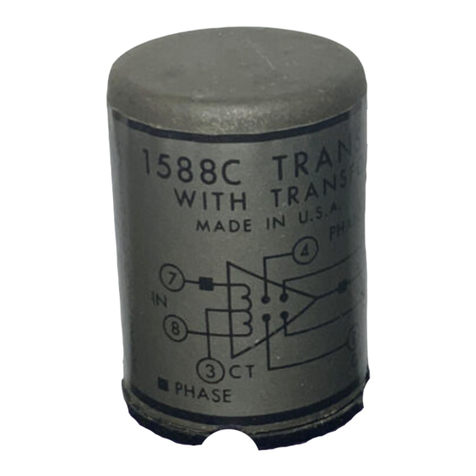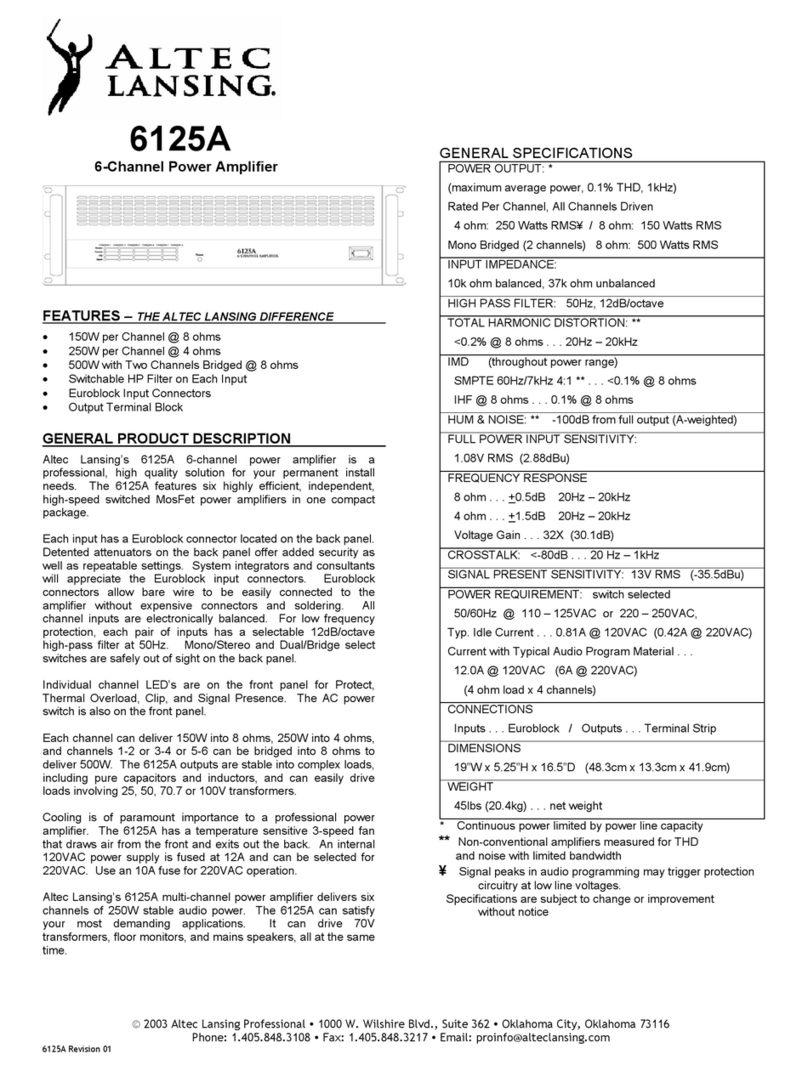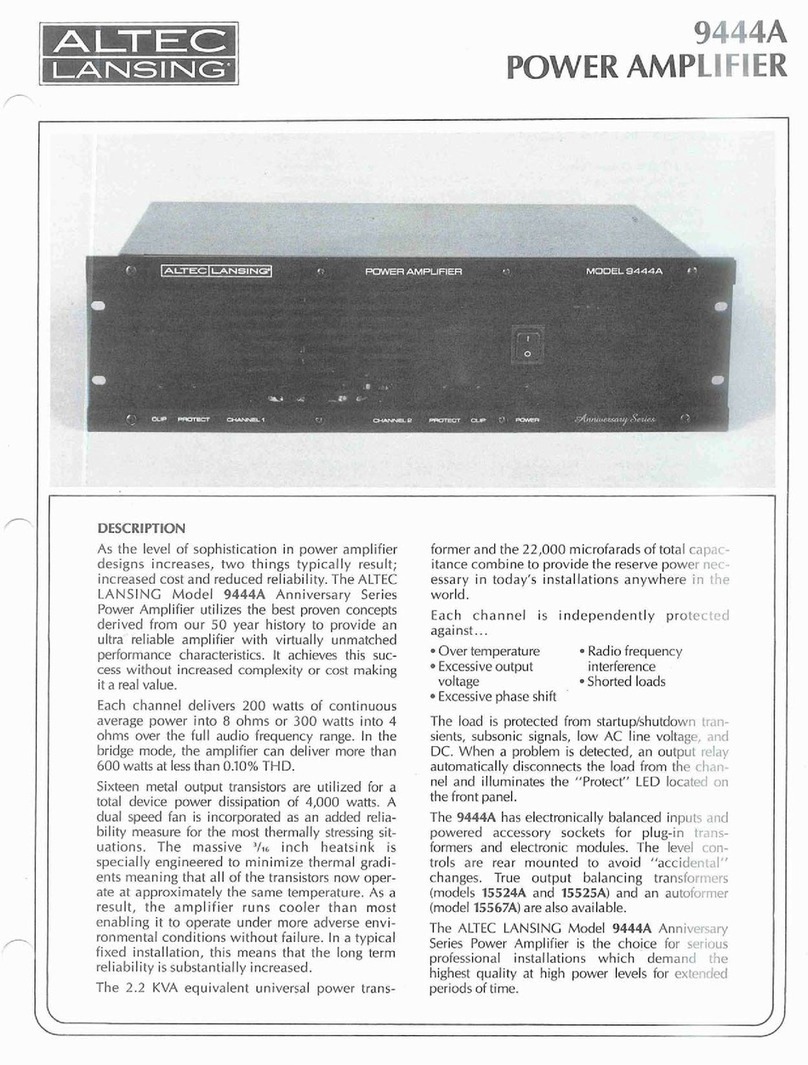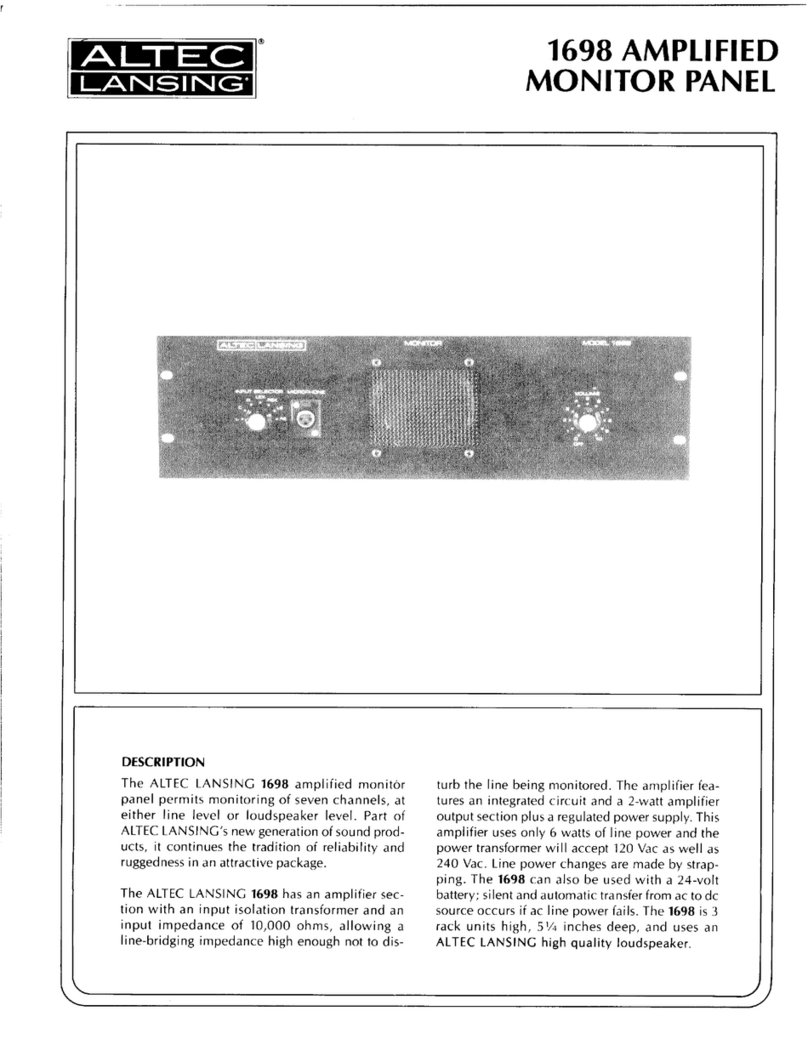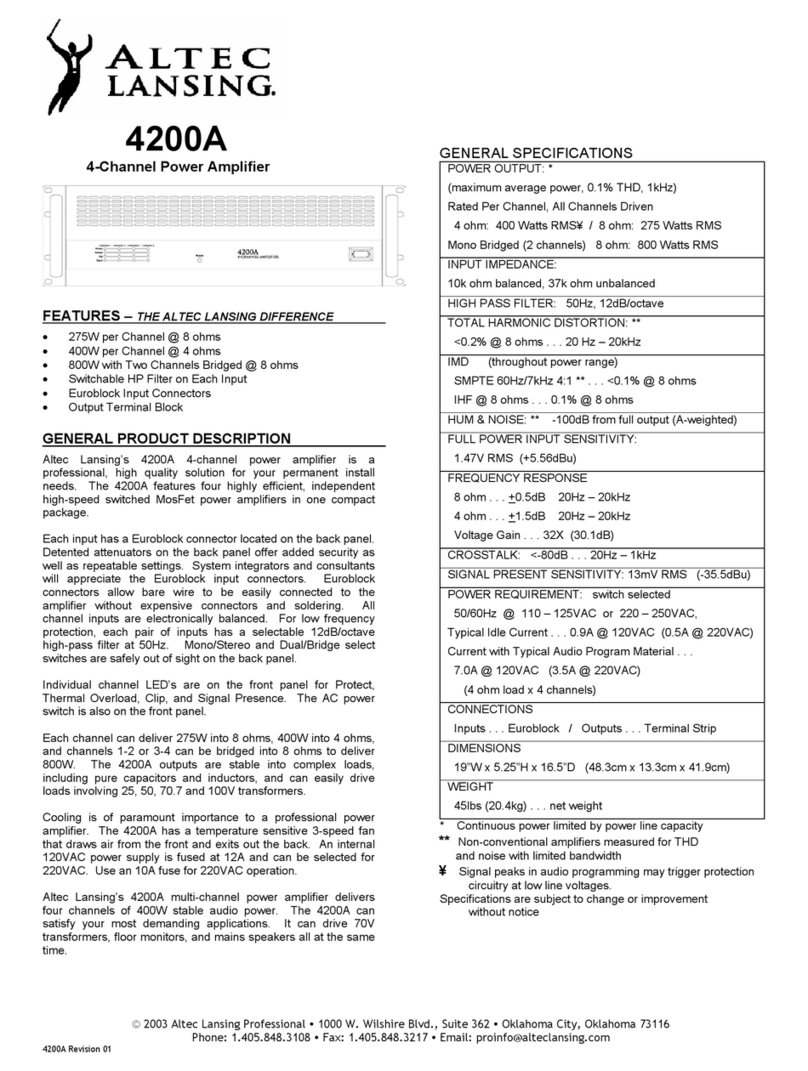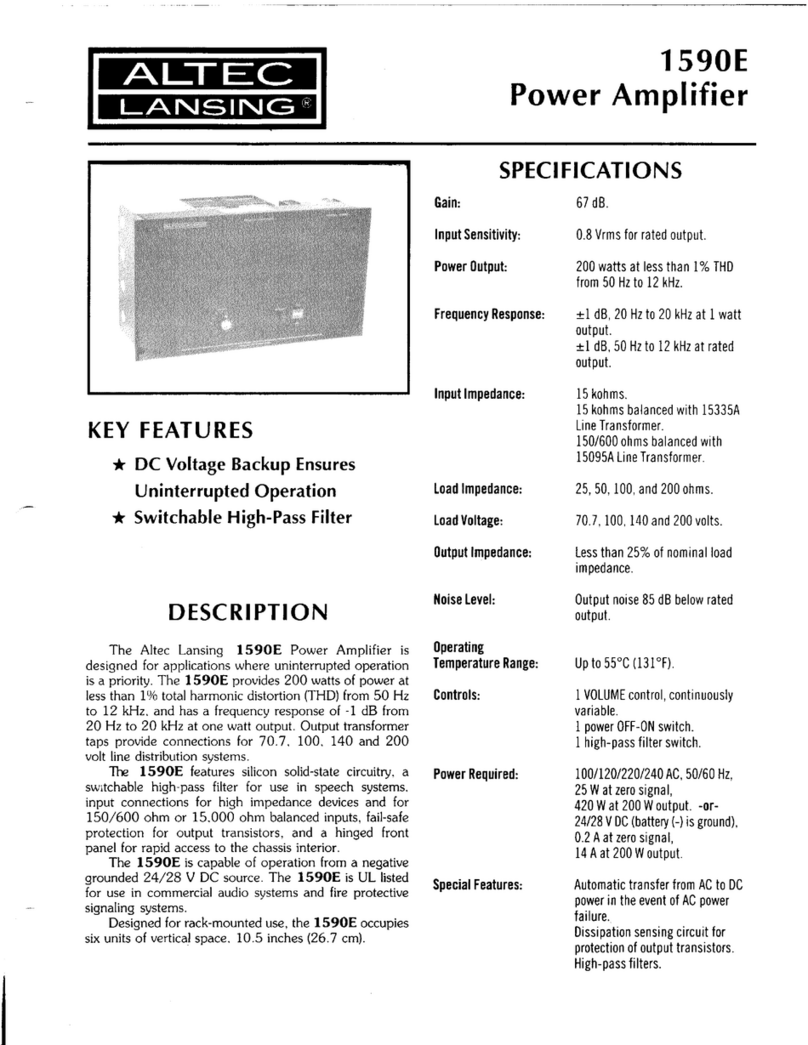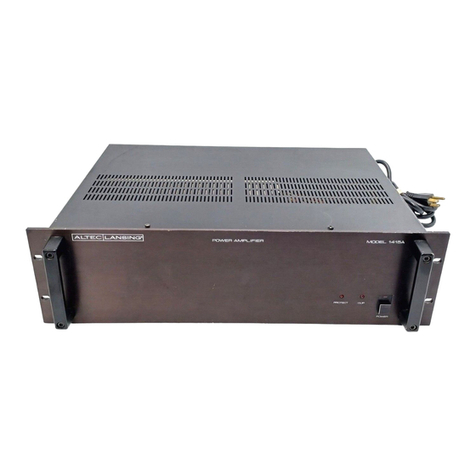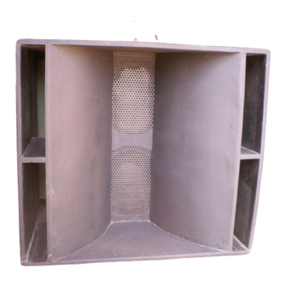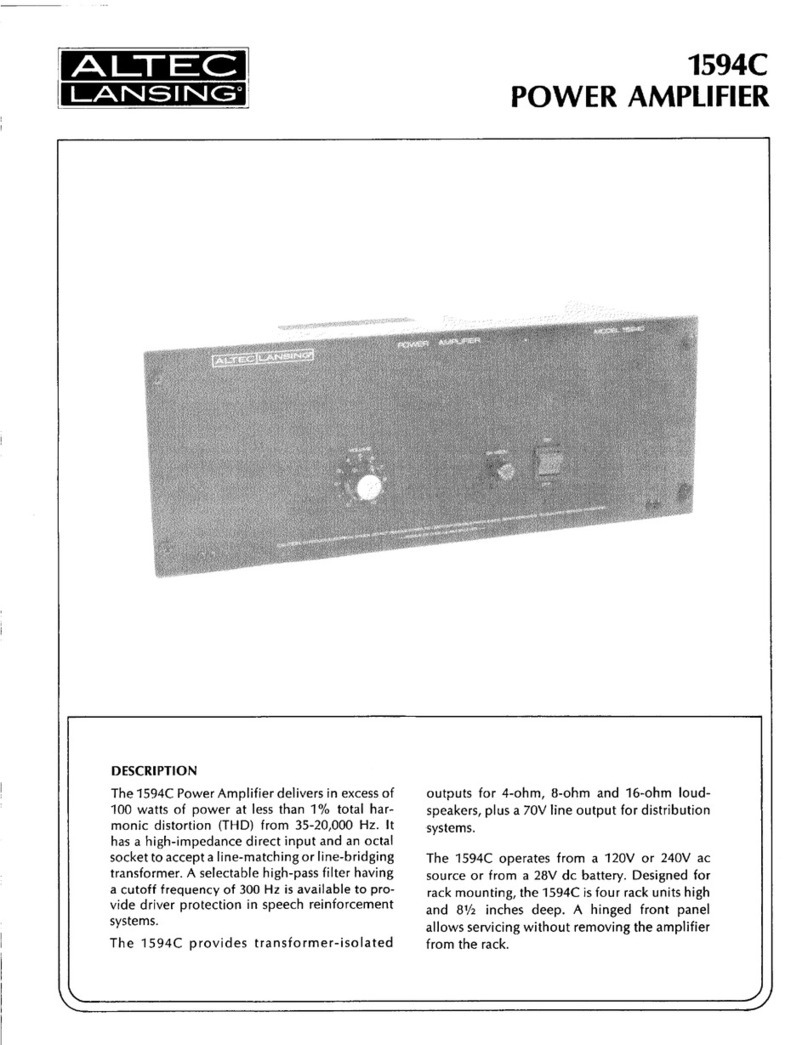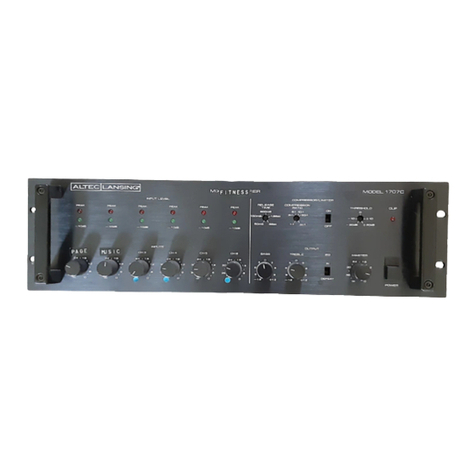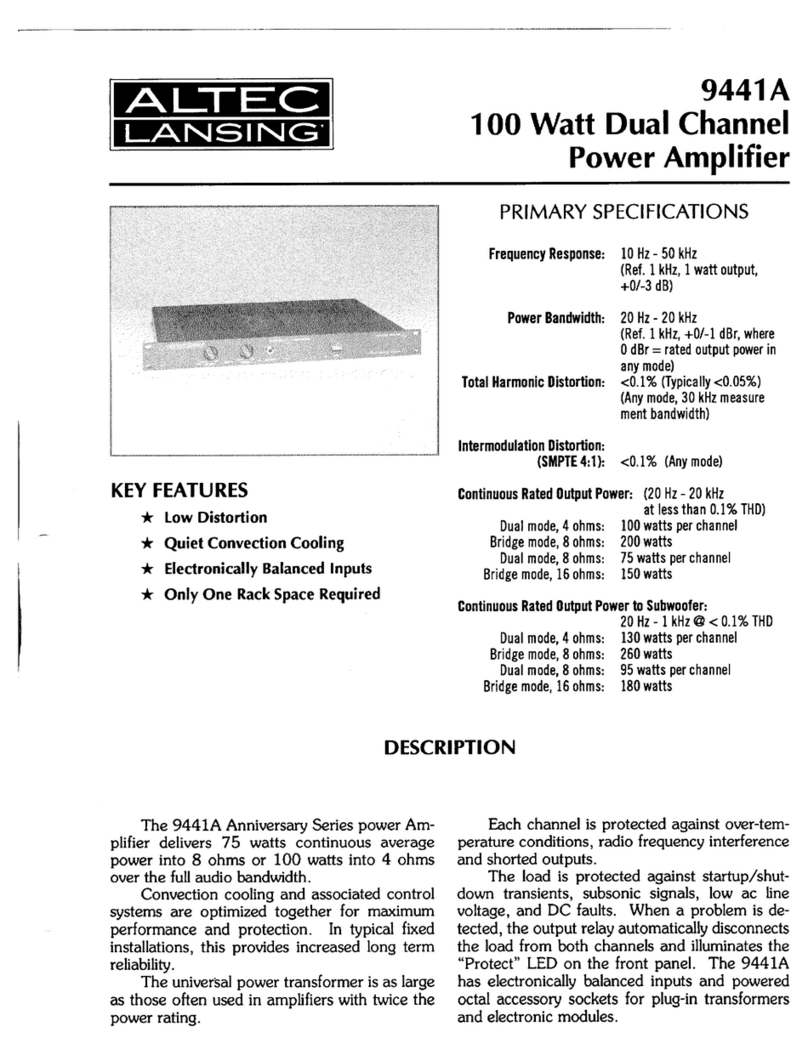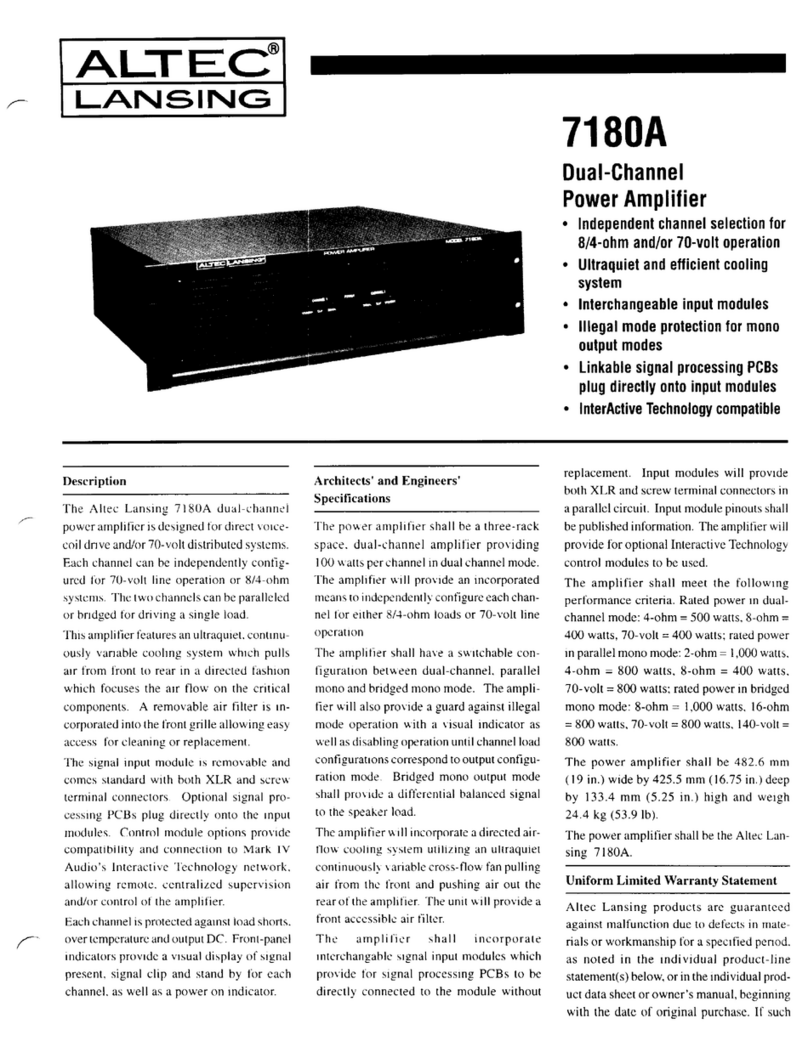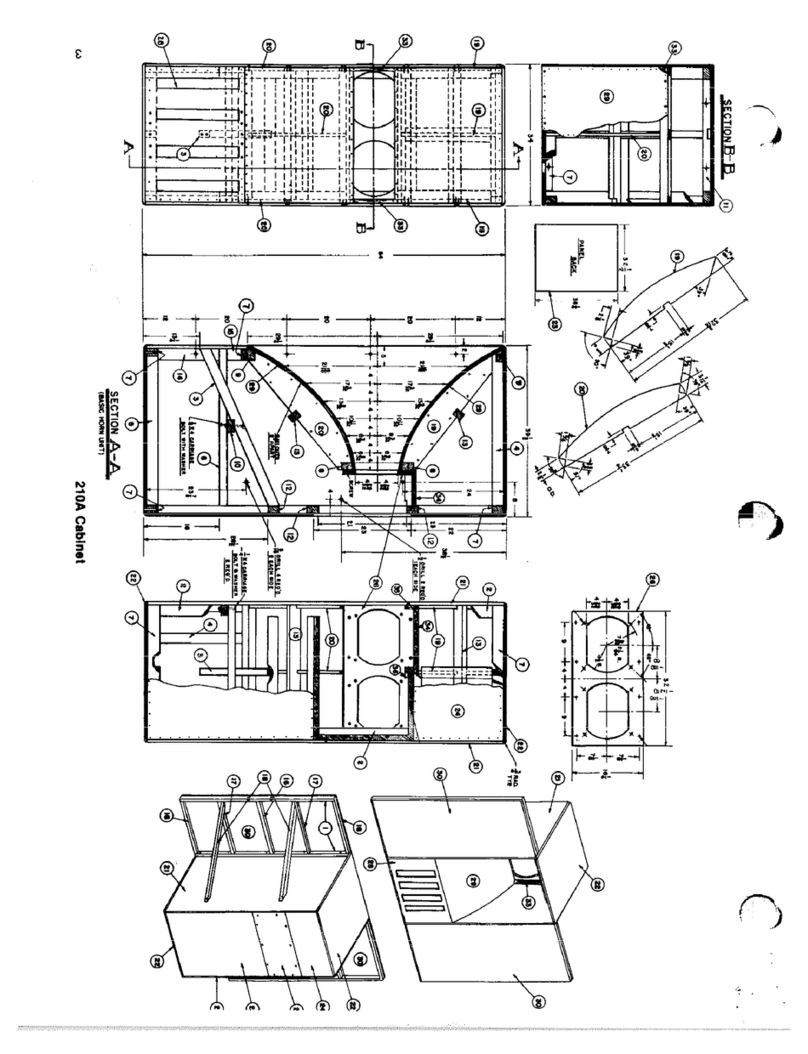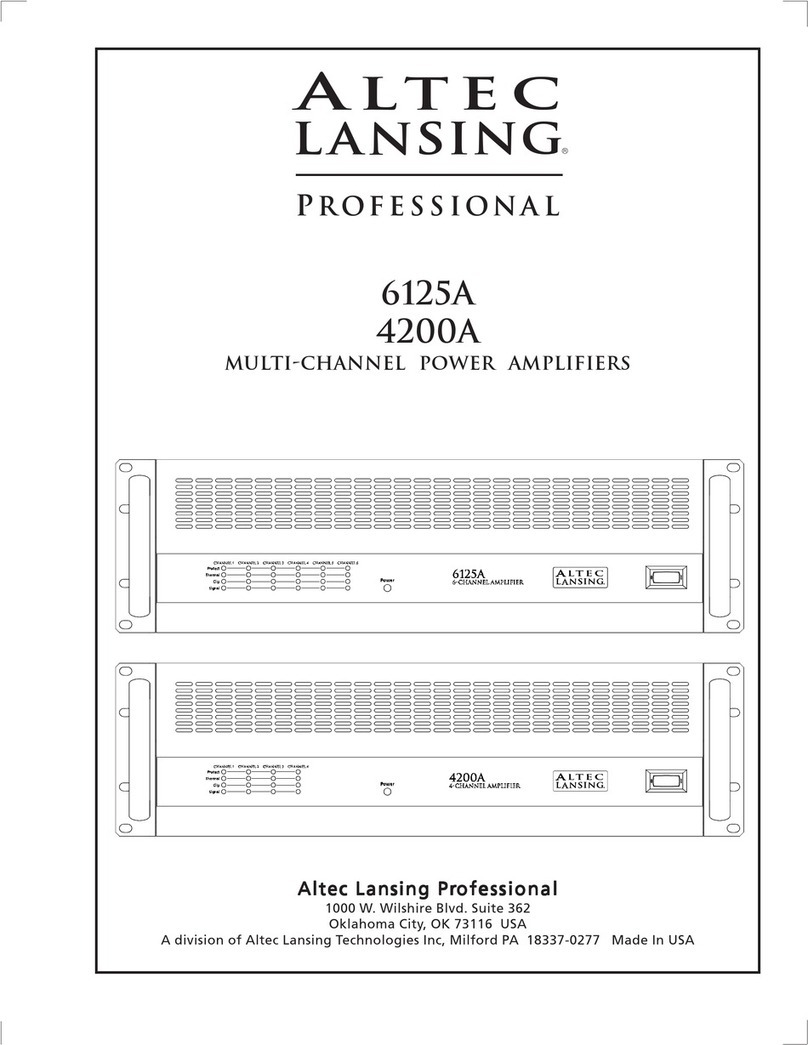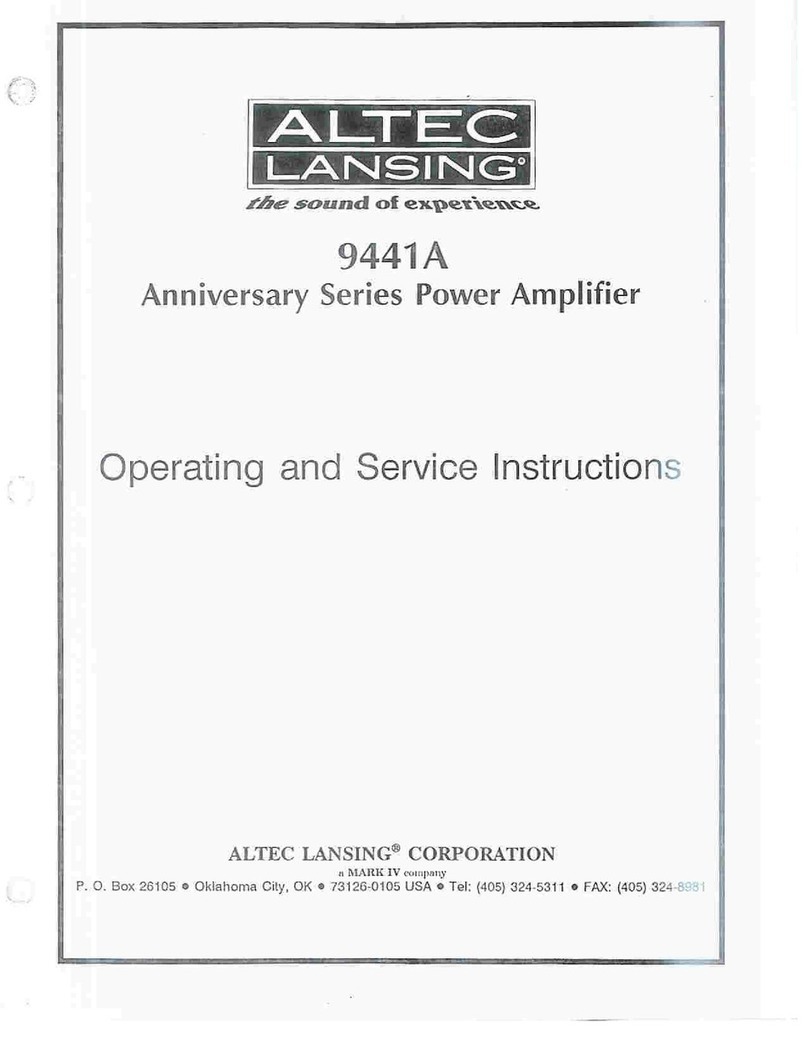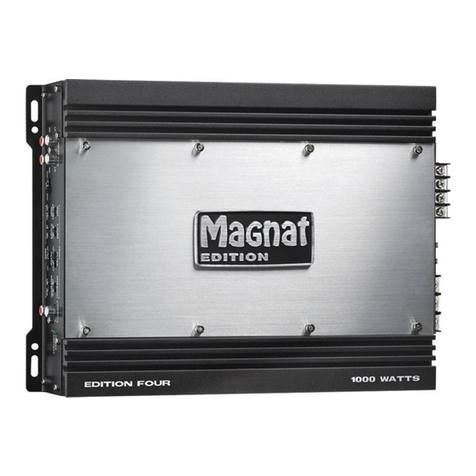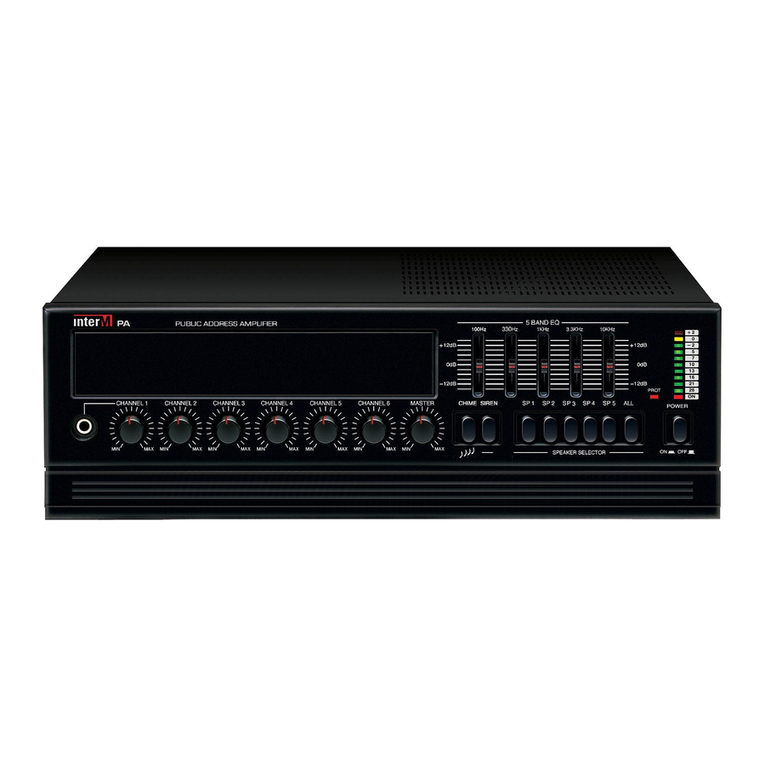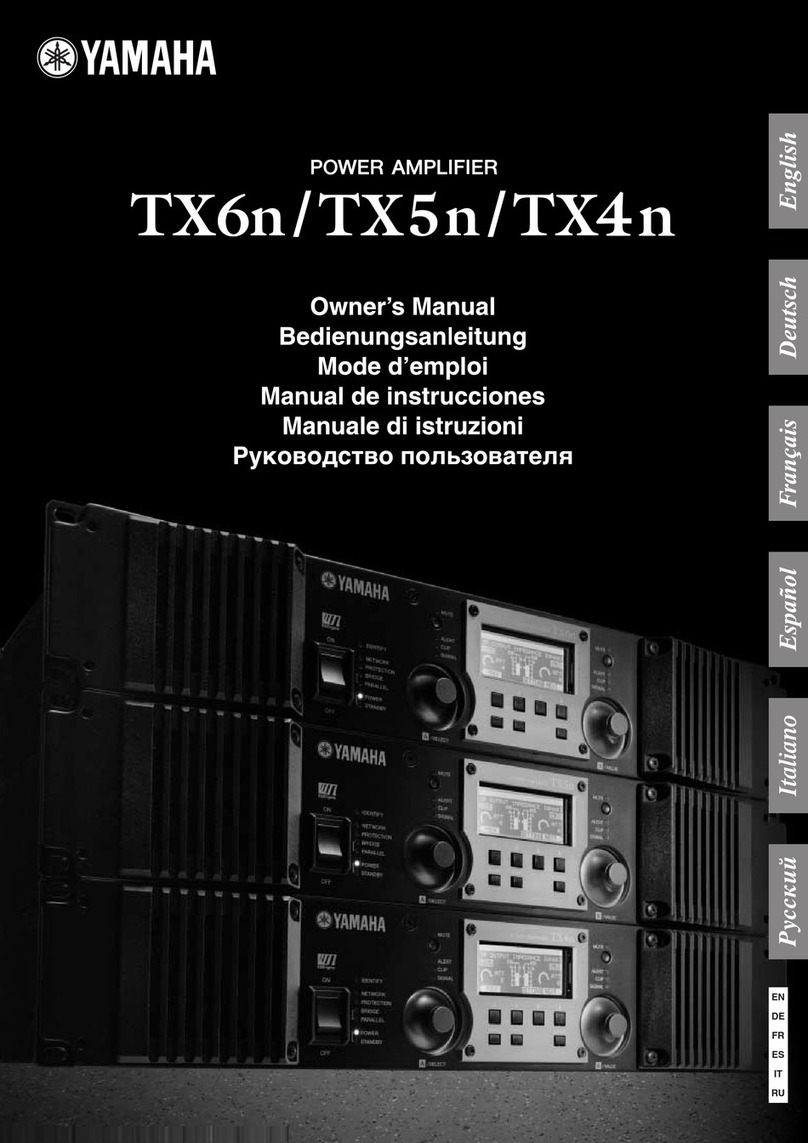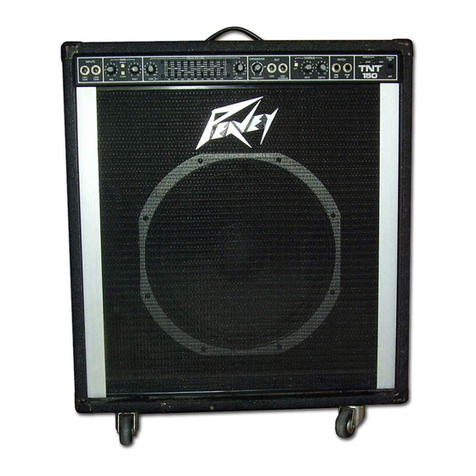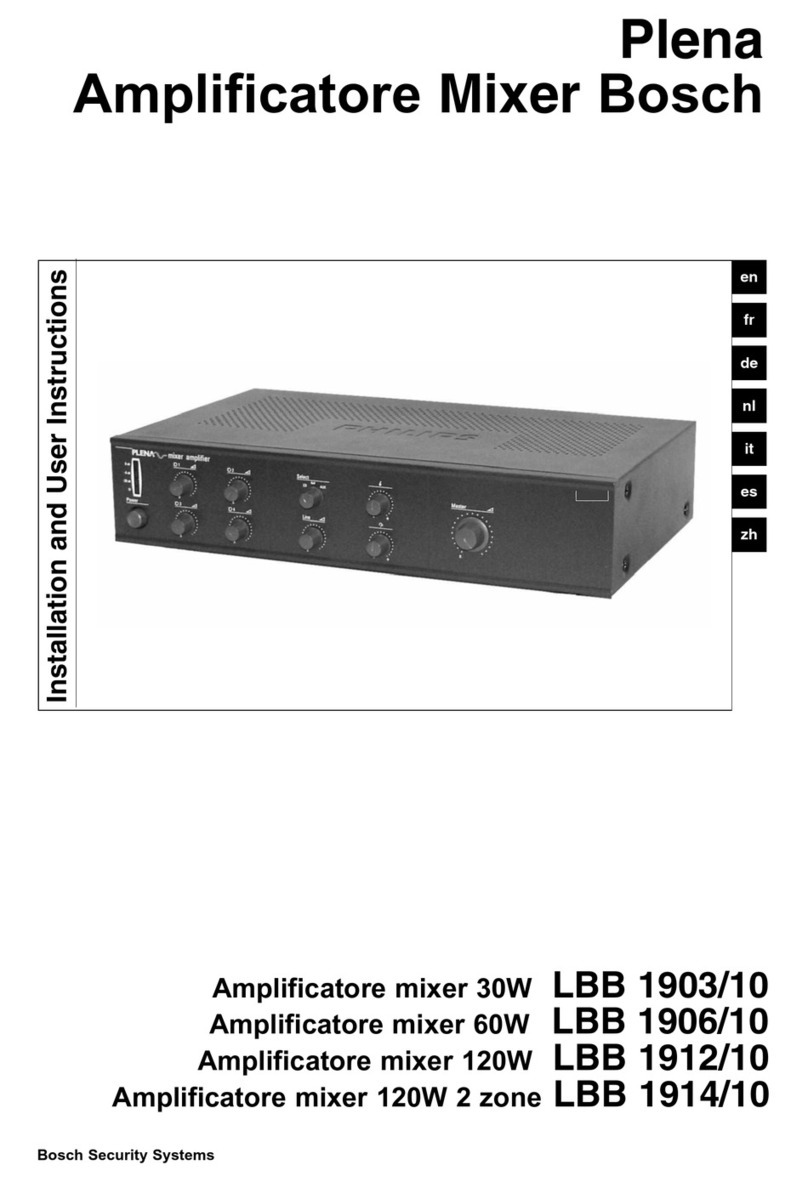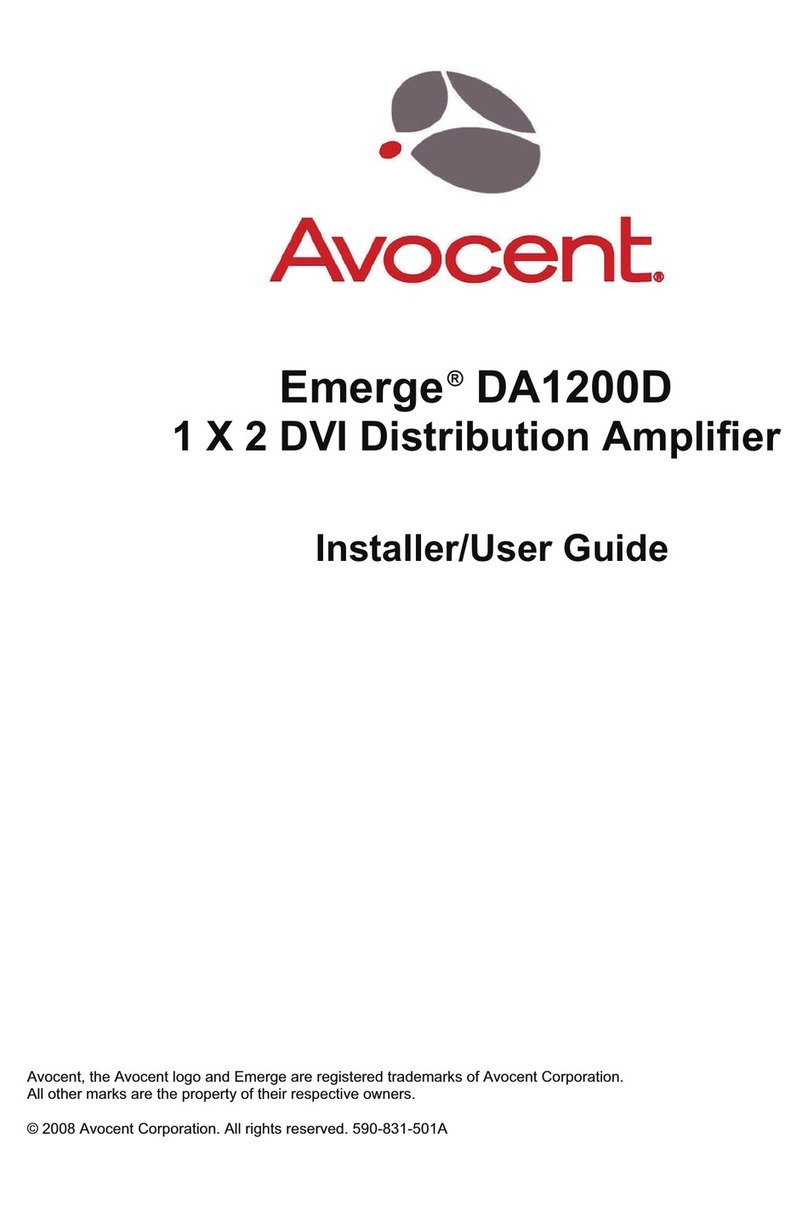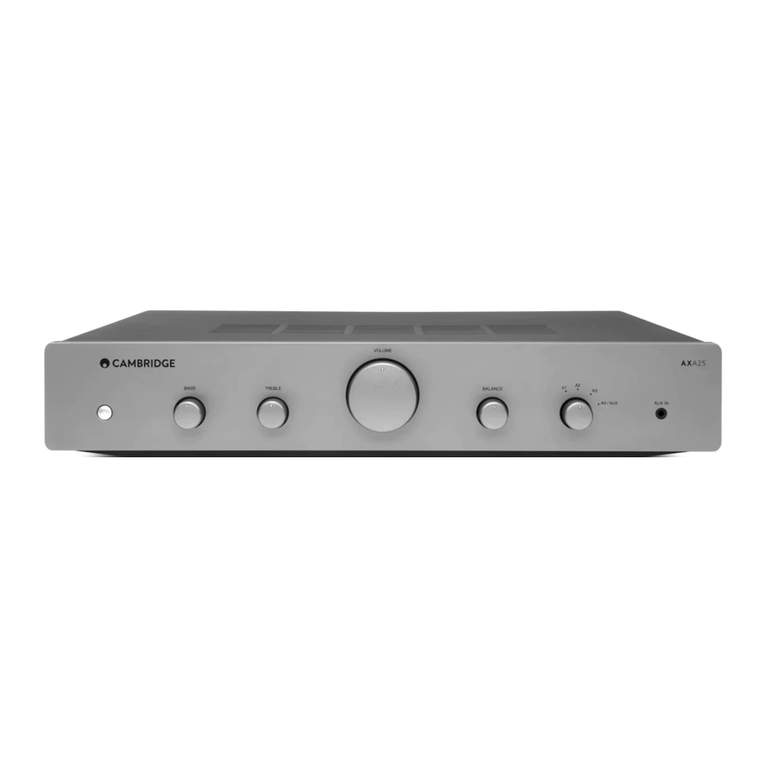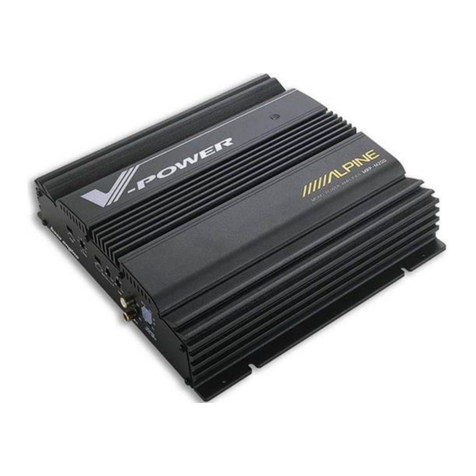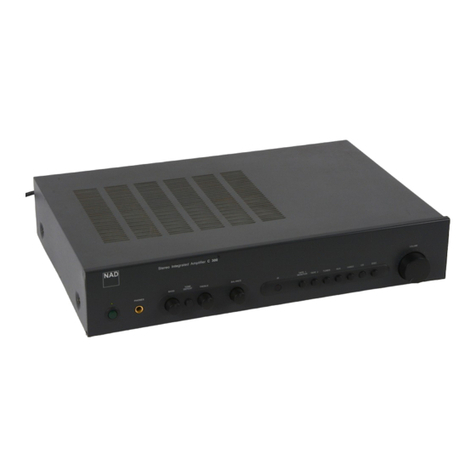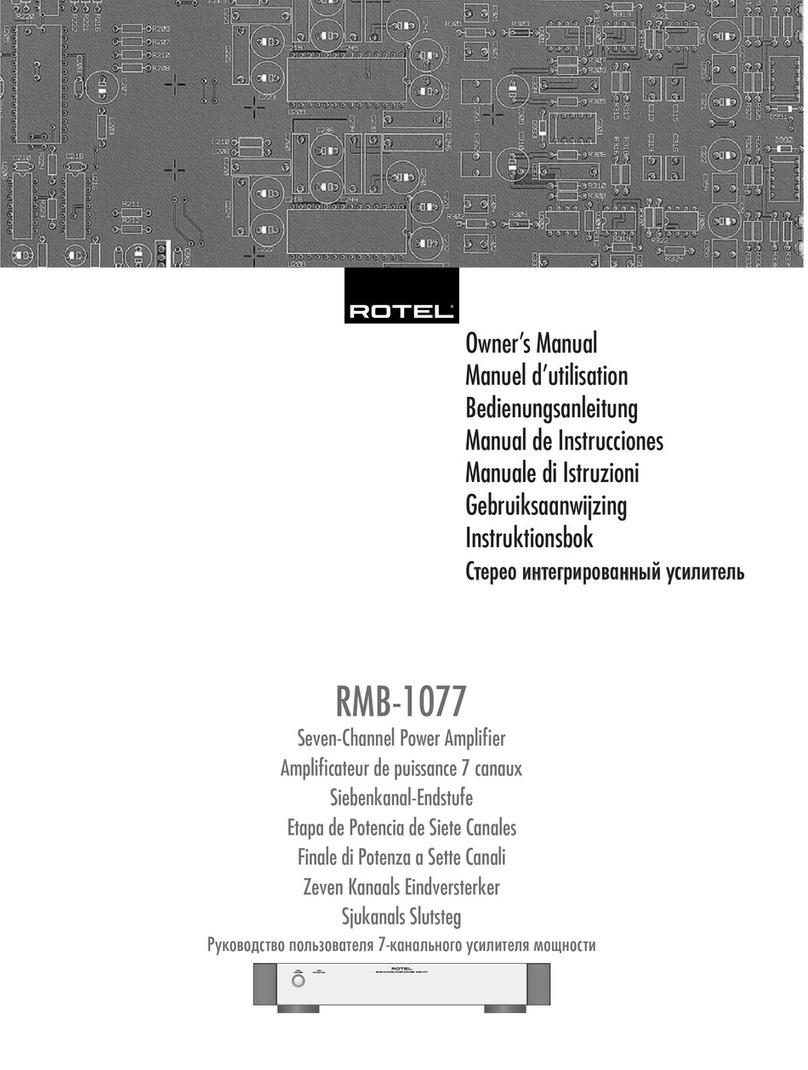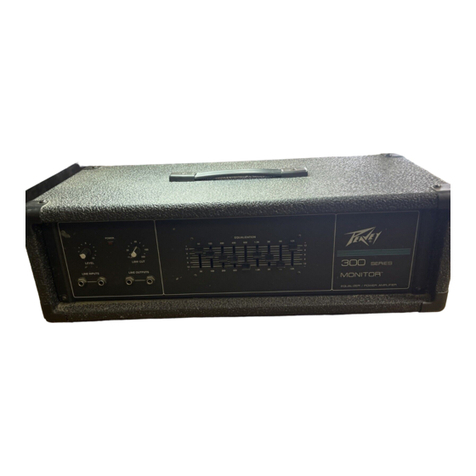
NO. 1 DRIVER MODULE SLOT
NO. 2 DRIVER MODULE SLOT AC PRIMARY
POWER MODULE
4 2 1
Figure 1. Main Frame and Position Assignments of Card Modules
MAINFRAME
The main frame accepts one primary power
(ac) module, one input module, up to two
driver or crossover driver modules, and up
to eight power amplifier modules. Each
plug-in module is inserted into the appro-
priate connector within the main frame, ac-
cording fo functional position as shown in
Figure 1. A hinged panel covers the module
positions after installation and adjustment.
All input/output connections are located on
the rear panel of the main frame . Four XLR-3
type female receptacles connect balanced
signals to the selected input module. Eight
1/4" phone jacks connect up to four sep-
arate unbalanced input signals. Four
special input/output stereo 1/4" phone
jacks (J213, J214, J215, and J216) connect
up to eight unbalanced signals direct ly to
the driver modules. Separate output con-
nections are provided for each power amp-
lifier module position.
When balanced input signals are fed to the
appropriate XLR-3 type connectors, output
signals may be derived at the UNBAL phone
jack connectors . The eight (UNBAL) phone
jacks adjacent to the XLR-3 connectors may
CHANNEL2
CHANNEL3
CHANNEL4
become unbalanced outputs, deriving
signals from transformer secondaries of the
Model 2221 Input Card Module. The four
special input/output jacks may become
special outputs, deriving signals from the
high, mid, and low frequency outputs of the
Model 2251 Crossover Driver Card Module.
This capabili ty of special signal routing is
readily indicated from study of the Modular
Block Diagram.
As shipped from the factory, each main
frame is equipped with an ac primary power
module, installed as in Figure 1.The module
is equipped with an ON-OFF ac power
switch (circuit breaker type) with built-in
pilot lamp. A terminal strip permits strap-
ping the power transformer primary for 100V,
120V, 200V, 220V, or 240V at 50/60 Hz; as
shipped from the factory, straps are in-
stalled for 120Vac. A fan is incorporated in
the module for forced-air cooling of power
amplifier modules.
INPUT MODULES
The main frame of the Incremental Power
System has four primary input connectors
(XLR-3 type) which accept balanced inputs.
CHANNEL1
CHANNEL4
MODEL2220 MODEL2221
Figure 2. Model 2221 and 2220 Input
Card Modules
2
One input module card may be inserted in
the main frame to process four primary in-
puts. These four input s may be balanced or
unbalanced by using the Model 2221 (trans-
former isolated) Input Card Module . The
four inputs may be unbalanced by using the
Model 2220 (transfor merless) Input Card
Module. Each input card module has four
adjustable attenuato rs to set levels
separately for each input. Figure 2 il-
lustrates each type of input card module .
If inputs to the main frame are unbalanced,
it is not always necessary to use an input
card module, because the Model 2250 and
2252 Driver Modules have attenuators to ad-
just signal levels. However, the Model 2251
Crossover Driver Module requires use of
either Model 2220 or Model 2221 Input Card
Module , because this driver input cannot
access special input/ output jacks J213,
J214,J21~orJ216.
DRIVER MODULES
The driver modules feed the inputs ·to the
power amplifier modul es for the desired ..
combinations of output for low, mid, high,
or full frequency ranges. One or two driver
modules, of any type and in any combina-
tion, may be inserted in the main frame to
process the inputs. A switching matrix is
built into each driver module for the power
amplifier modules to be operated in parallel,
bridged, parallel-bridge d, or independent
modes . The driver modules are equipped
with two or more drive r-amplifier circuits ,
with the input of each circuit independently
adjustable . Driver modules with the (SA)
suffix are adjustable wit h step attenuators
in increments of - 1 dB, to a maximum of
- 63 dB. Modules withou t the (SA) suffix are
continuously adjustable to a maximum at-
tenuation of at least - 60 dB. Figure 3 il-
lustrates the various types of driver card
modules .
The Model 2250 Driver Card Module in-
cludes two driver-amp lifier circuits, an
a-channel input switching matrix , and an
a-channel output switchi ng matrix.
The Model 2252 Driver Card Module in-
cludes four driver-amp lifier circuits, an
a-channel input switchi ng matrix, and an
8-channel output switchi ng matrix.
The Model 2251 Crossover Driver Card
Module is specially designed to provide
two-way or three-way electronic crossover .
The module includes three driver-amplifier
circuits and an 8-channe l output switching
matrix. Selectable frequ encies are 625 Hz,
800 Hz, 1250 Hz, and 1600 Hz for low to mid
frequency; 3150 Hz, 4000 Hz, 5000 Hz, and
8000 Hz, for mid to high frequency . Slope
rate is fixed at 12 dB per octave. The cross-
over driver module can drive the power amp-
lifier modules directly, or feed into another
driver module to create different signal
levels from one crosso ver driver output.
One or two crossover driver modules may
be inserted in the main frame for a monaural
or stereo biamplified or triamplified system.
Input to the Model 2251 Driver must come
from Model 2220 or 2221 Input Card Module
via channel 1 (left-hand driver module slot)
or channel 3(right-hand driver module slot).

